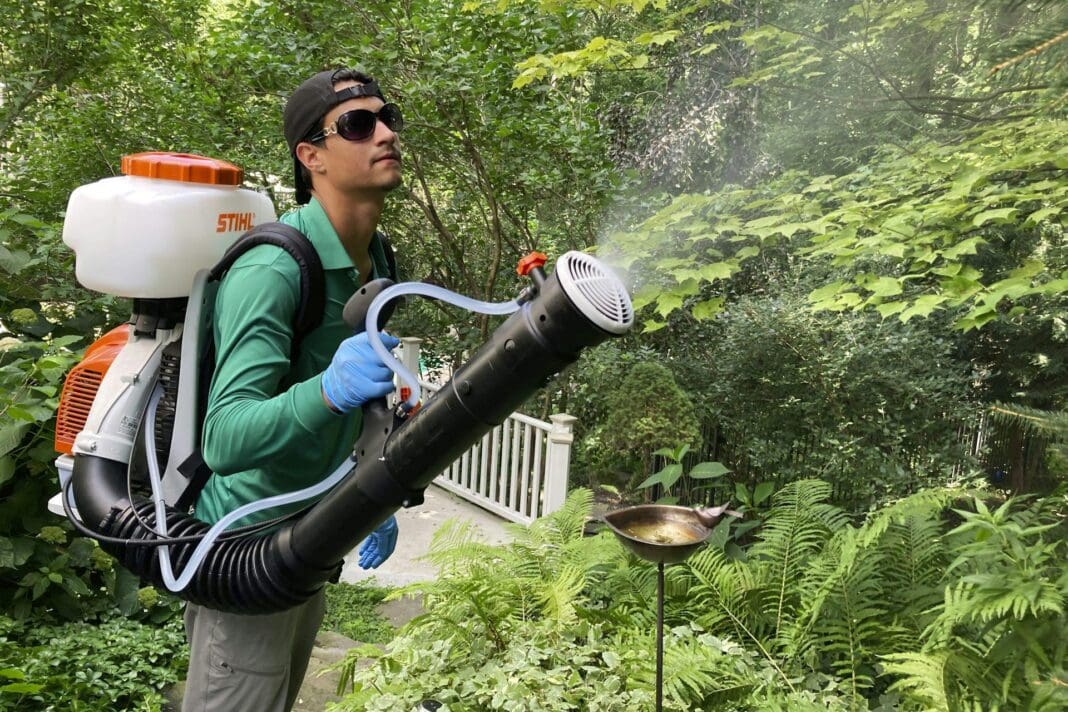Environmental Protection Agency head Lee Zeldin has said he wants the federal agency to accelerate scientific safety evaluations of various chemicals, including pesticides.
The EPA reportedly has more than 500 pending reviews of proposed new pesticides and more than 12,000 overdue reevaluations of pesticides currently in use. The agency is under pressure from the chemical and agricultural industries to catch up, while health and environmental advocates demand it maintain high safety standards.
The review process is careful for a reason – and perhaps the only real method of speeding it up is the one Zeldin has proposed: reassigning staff so there are more people to share the work.
As a faculty member at a land-grant university who has studied the effectiveness of commercial and experimental pesticides in the southern U.S., I have seen how the federal pesticide regulatory process identifies risks to humans and the environment and mitigates them with specific use instructions. Here’s how the process works.
The EPA, which regulates pesticides in the U.S., defines a pesticide as any substance or mixture of substances intended to prevent, destroy, repel or mitigate any pest, such as weeds, insects and organisms, that attack plants.
Pesticides are often referred to as toxins when found in food, water bodies or other places where they are not intended. But just because something is detected doesn’t mean it’s harmful to humans or wildlife. Toxicity depends on how much of the substance a person or animal is exposed to, how they are exposed to it – such as breathing it, or getting it on their skin – and for how long.
The Department of Agriculture began regulating pesticides in 1947 with the Federal Insecticide, Fungicide, and Rodenticide Act. Most of the department’s interest was whether a particular pesticide was effective against the target pests.
In 1970, the newly formed EPA took over responsibility for pesticides. It shifted its focus to the safety of consumers, farmworkers and the environment after the Federal Environmental Pesticide Control Act took effect in 1972.
Federal law requires the EPA to evaluate both the risks and the benefits of each pesticide – and to revisit that analysis at least every 15 years for every pesticide used in the U.S.
The EPA determines whether the risks to people, animals or the environment are too high for the benefits the pesticide provides and whether any of those risks can be reduced. Sometimes a chemical’s risk can be lessened by recommending mitigation strategies such as wearing protective clothing, reducing environmental spread by barring the use of pesticides near the edges of a property, or decreasing the amount of a pesticide that’s legal to use.
In its analysis of any given pesticide, the EPA requires a massive amount of data from the manufacturer about what ingredients the pesticide contains and how they work. The agency also reviews scientific research on the pesticide and uses its own scientists and independent experts to evaluate any studies that were submitted by the manufacturer.
The EPA uses all the available data on a pesticide to evaluate the dose that would be toxic to a range of organisms, as well as what residues the pesticide may leave on plants, in the soil and in water. The data is incorporated into computer models that estimate the potential amount of the chemical that may come in contact with humans, animals and the environment. Those models’ results are then combined with toxicity data to determine risk.
The models used by EPA scientists are very conservative. They often use significant overestimates of exposure, which means that when the models determine the risk of a pesticide is below a particular level, they are evaluating the risk posed by far higher quantities of the chemical than will ever actually be used. The risk from the amount actually used, therefore, is even less likely to cause harm.
The EPA also provides opportunities for public comment on a pesticide and uses that information in its evaluations as well.
The Endangered Species Act also requires the EPA to evaluate the effects of pesticides on threatened and endangered species.
If a pesticide is found to potentially be dangerous to a protected species or its habitat, the EPA will discuss those findings with the U.S. Fish and Wildlife Service and the National Marine Fisheries Service, which enforce the Endangered Species Act, and determine what to do to ensure the species aren’t harmed.
The law’s requirement to reevaluate each pesticide every 15 years is based on the fact that science evolves and information becomes more precise. New data can shed light on potential risks and benefits, and even lead to pesticides being banned or more closely restricted.
Until recently, for instance, pesticide residues on plants, food and in the environment were measured in parts per million. Newer equipment can measure even smaller amounts, determining parts per billion, which is as precise as identifying one single second in 32 years. Some chemicals can even be measured in parts per trillion, equivalent to one drop of water in 20 Olympic-size swimming pools. That means exposures can be more accurately measured. While some chemicals can be toxic in very small concentrations, most pesticides can be detected at levels that do not pose a biological risk.
If the EPA determines that a pesticide’s risks outweigh its benefits, then its staff will conduct additional analyses to determine how to mitigate the risks enough to justify using it. If that’s not possible, the EPA will reject the application and not allow the pesticide to be used in the U.S.
If the agency determines that the benefits outweigh the risks, the EPA approves the pesticide for sale and use in the U.S. The law requires the pesticide come with a label providing a strict set of guidelines for how, when and where to use the pesticide.
The guidelines define amounts and timing for applying the pesticide safely, and specific restrictions or protection strategies to control the target pests while eliminating or minimizing harm to the environment, workers and the public.
The EPA also makes information on pesticides available to the public, so anyone can find out how to use them safely. Using the pesticide without following those directions is a violation of federal law.
This article is republished from The Conversation, a nonprofit, independent news organization bringing you facts and trustworthy analysis to help you make sense of our complex world. It was written by: Jeffrey Gore, Mississippi State University
Read more: Humans are killing helpful insects in hundreds of ways − simple steps can reduce the harm Stripping federal protection for clean water harms just about everyone, especially already vulnerable communities Federal laws don’t ban rollbacks of environmental protection, but they don’t make it easy
Jeffrey Gore receives funding from the USDA-ARS and has received funding from various state and national commodity boards, and chemical and biotechnology companies in the past. Jeffrey Gore served on the EPA's Farm, Ranch and Rural Communities Committee from 2019 to 2024.













